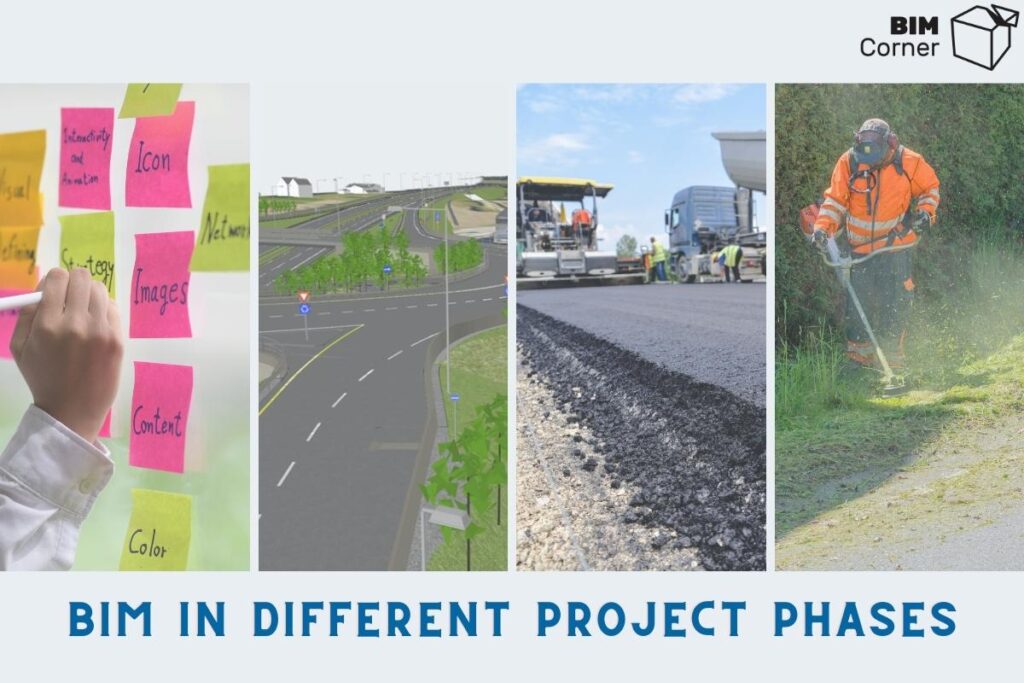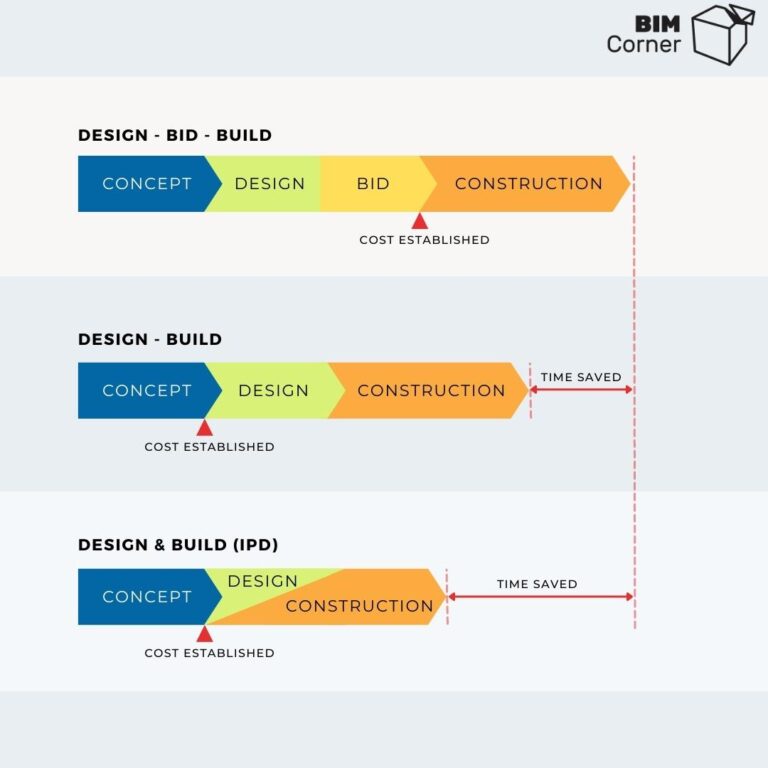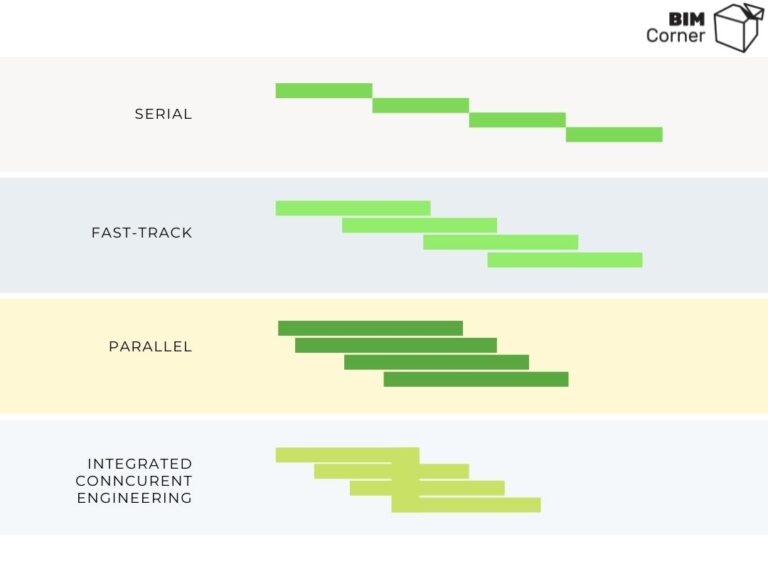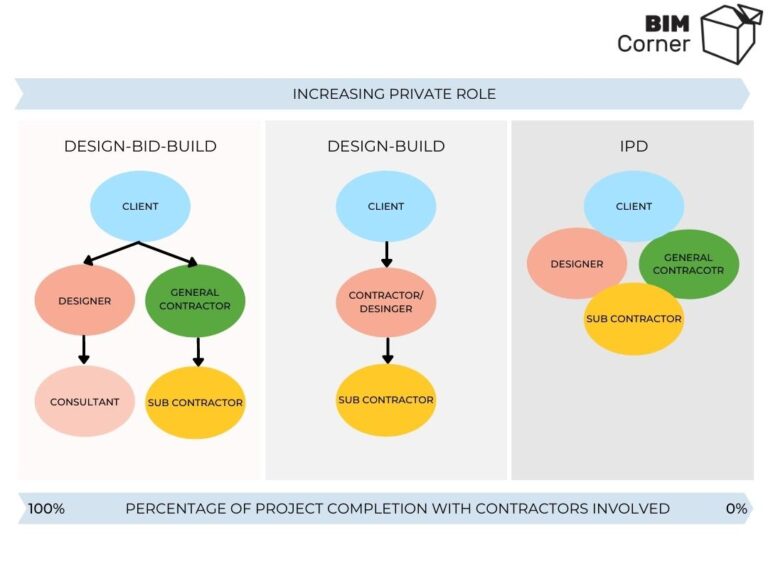The BIM methodology in construction investments has been used for over a decade. However, the level of its implementation differs from project to project. An important factor affecting the scope of BIM use is the type of construction contract.
A construction contract, through its form, may encourage or discourage the use of new technologies / innovative solutions.
In this article, I would like to present the basics related to the type of construction contracts and how their formula may affect the use of BIM in the project.
I invite you to read!
Table of contents
Construction Investment
A construction contract is an agreement for design and / or construction services as part of a construction investment between the parties involved in the project. In the construction industry, it is most often an agreement between an investor, designer and contractor. There are many types of construction contracts in the world. Their form differs due to
- the investment phase,
- financing method ,
- responsibility and risk-sharing among stakeholders.
The investment can be financed with private or public money. Private contracts may include projects such as: office buildings, residential buildings, logistic halls. Public contracts, as opposed to private ones, more often include the infrastructure construction sector (roads, railways, airports).
It is impossible to talk about all types of contracts, so I will focus on the most common forms used in the world. Undoubtedly, the top 3 contracts used in the construction industry in recent years are:
- Design-Bid-Build
- Design-Build
- IPD (Integrated Project Delivery)
Phases in the investment
concept (planning) – design – construction – management
Depending on the contract, these phases may progress one after another, overlap or run simultaneously.
In Design-Bid-Build investments, the phases follow one another. First, a concept is created, then a construction cost is calculated. The appraisal of construction works serves as a template on the basis of which the contractor for construction works is selected.
In the Design-Build investments, course of the stages is not obvious. The phases can run one after the other or simultaneously. It is very common to find investments in which contractors start construction works with a slight delay in relation to the beginning of design works. The manner of conducting the investment depends on the competence of the contractors. Knowledge of BIM is an advantage in this case. The MMI that we wrote about here turns out to be helpful in this type of investment.
By design, the investment phases in IPD – Integrated Project Delivery are more dynamic. This is, among other things, thanks to faster decision making. Project meetings (e.g. ICE) of all stakeholders in the project, in one place (or online) play a key role. Instead of waiting days (weeks) for a decision, you can resolve and decide on a disputed issue within one session. This leads to a reduction in the latency in the project, which translates, among others, into a faster investment time.
Construction contracts
Design-Bid-Build
In traditional projects such as Design-Bid-Build the investment phases are linear, one after the other. It is a commonly used scheme, understandable by all parties to the contract.
In this type of investment, the client is not involved in the process of creating project documentation. Of course, this is not a rule. In more developed countries, the investor participates in the verification process. However, it sometimes happens that the contracting authority is not interested in the way the project was performed (project documentation). This stakeholder is only interested in the completed documentation on the basis of which he can evaluate the construction works and prepare the tender documentation. In this type of investment (in Norway, soft criteria are used), the price aspect is still a key criterion in the context of selecting a contractor in the tender procedure. Cheaper wins.
The designer does not consult the contractor of the project due to the fact that both entities work in two separate phases. Each phase is independent of the other and is contracted separately. This prosaic circumstance may translate into a greater number of errors in the design, less optimization in terms of the materials used and the technology of the production. This leads to a situation where the investor, after consultation with the contracting company, may request corrections from the designer to the previously approved documentation. The redesign process extends the investment time. The waiting time for a decision is called project latency.
Design-Build
In design-build projects, we have a slightly different situation. A significant change compared to traditional contact is that one contract is used to provide design and construction services. In design-bid-build, these are two separate contracts.
The investor signs a contract with the contractor. The latter signs a contract with the designer. In larger projects it happens that the system linking the designer and the general contractor is a newly established legal entity (e.g. a consortium).
In design-build contracts, the price is still the most frequently used criterion for selecting the best offer. However, the method of selecting contractors, which is BVP – Best Value Procurement, is becoming more and more popular in the Scandinavian countries. It is a method with 5 criteria, one of which is price that accounts for 25%.
We mentioned BVP here in this article: link
“the Best Value Procurement (BVP) method, which is becoming more and more popular in Norway, there are five criteria, including the price criterion, which normally accounts for 25%. Other criteria include how the contractor plans to carry out the project (25%), risk assessment (15%), added value (10%) and the competence and experience of key people in personnel (25%).”
In design-build we have a situation in which the designer and the contractor cooperate during the project. It is ideal if the dialogue is conducted from the very first day of the investment. Due to the BVP method, the winners of the tender are very well selected in terms of competences.
IPD - Integrated Project Delivery
And here I can mention IPD – Integrated Project Delivery. Until now, I have encountered this type of contact in vertical investments (hospitals, power plants). In the context of infrastructure projects, the most frequently chosen forms are: Design-Bid-Build and Design-Build. The first attempts to use this form of contracts in linear projects appear in Norway (Nye Veier).
A significant difference between a design-build and IPD is that the IPD contract is concluded between all stakeholders in the investment. The main subcontractor, part of which is crucial for the entire investment (MEP, Tunel, Bridge), is often a party to the contract.
Another element characteristic for IPD is sharing risks, responsibilities and profits. It is in the interest of each party to succeed in the project. This form of contract causes the stakeholders to have a common goal and cooperate together. Often, contracts in this form are delivered faster. This is influenced by many factors, including improved communication, optimization of approval processes, and involvement of all stakeholders from the beginning of the investment.
Stakeholders in the project
The main stakeholders in construction investments are the ordering party (Client), designer and general contractor. In IPD projects, a subcontractor of key building elements is also invited to a joint agreement. (eg MEP, Tunnel, Bridge)
Stakeholder involvement varies according to the type of contract. The investment carried out using the Design-Bid-Build method envisages two tender procedures. First, the procedure aimed at selecting contractors for design documentation. The second procedure to select contractors for construction works. The contractor for construction works determines the price of the works based on the analysis of the tender documentation. As the contractor is not involved in the process of creating design documentation, there is a considerable risk that errors may occur that will require redesign.
In the Design-Build and IPD we are dealing with greater involvement of stakeholders in the project. In the graphic above, it can be seen that in investments where all stakeholders work together under one contract, mobilization in the project occurs at the earliest.
BIM
Let’s move on to the last element discussed in this article. The use of new technologies (eg. BIM) in various types of contracts.
In Design-Bid-Build contracts, we see more and more often the use of modern software or management methodologies known, for example, from the IT industry (Agile). The use of BIM is common in the design phase. More and more often, ordering parties are aware of the benefits of using the BIM methodology, which makes them more willing to use this methodology in the project. It is crucial that the ordering authority (client) clearly describes the BIM ambitions and the purpose of the documentation in the terms of the contract.
Characteristic for Design-Bid-Build is that the design work is linear, the processes follow one another, iterative. BIM is implemented individually in each phase. We are dealing here with the so-called Lonely BIM.
The ordering authority, choosing the design-build formula of contract, expects that the construction documentation will be of higher quality. The use of BIM is therefore naturally used here. Early involvement of the contractor and the combination of the design and execution phases help in BIM implementation. BIM documentation created in the design phase is used to a greater extent in the construction phase. This is because the general contractor has a real influence on what is designed and in what form it is delivered to the construction site. It often happens that an investment will be delivered ahead of time.
It is safe to say that IPD cannot be imagined without the BIM methodology. The BIM methodology improves communication and allows you to make faster decisions. Working on up-to-date data, a common CDE for all stakeholders, makes sense here and is not exaggerated.
This way of conducting investments favors, and even imposes the use of new technologies and a modern approach to investment management. One of the project management methods is VDC (Virtual Design and Construction), the basics of which we have mentioned here. The VDC methodology helps to organize project work based on such elements as: customer goals, project goals, ICE – Integrated Concurrent Engineering, PPM – Project Production Management, BIM – Building Information Modeling. Measurements and metrics, which are largely used in project management in accordance with VDC, are also very helpful.
Summary
As you can see, there are many forms of contracts. They differ in terms of the investment phase, the way they are financed, the level of involvement, the responsibility and the sharing of risk among the stakeholders. The use of BIM methodology will differ between projects.
The best environments for implementing BIM are design-build and IPD projects where stakeholders collaborate to a greater extent. The right choice of BIM ambition depends on the form of contract management.
In the following articles, I would like to introduce you to the various BIM ambitions depending on the form of the contract.
STAY TUNED!













Marcin Pszczolka what a good article! It complement BBC course module 5. Thanks a lot.